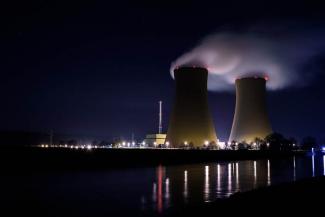Water is an essential resource for human life. It’s also a key component of energy production. In celebration of World Water Day, we’re sharing some of our innovative water conservation projects.
For example, thermoelectric power generation accounts for more than 40 percent of freshwater withdrawals and more than 3 percent of freshwater consumption. That adds up to billions of gallons of water per day. As populations grow and economic development continues to expand, so too will our energy demand and water consumption.
In a recent roundtable discussion with government and industry leaders, U.S. Department of Energy (DOE) Secretary Rick Perry underscored the challenges that drive innovation, and water was chief among the critical issues. DOE is spurring innovation in critical water issues, and the Office of Fossil Energy’s National Energy Technology Laboratory (NETL) is a central agent in that endeavor. Here’s how we’re making a difference in conserving our nation’s water resources.
Increasing efficiency and reducing emissions: DryFining™ technology, developed in partnership with Great River Energy (GRE), uses a power plant’s waste heat and a special drying process to remove moisture and impurities from certain kinds of coal—making its use cleaner and more efficient. By installing this technology, GRE’s Coal Creek Station in North Dakota reduced its sulfur dioxide and mercury emissions by 40 percent, nitrogen oxide by 20 percent, and carbon dioxide by 4 percent. They found that removing moisture from the coal decreased the volume of exhaust gas by 17 percent produced, while also improving the efficiency of fans, motors, and emissions-control equipment.
Recovering water vapor from power plants: Water evaporating from cooling towers is a common sight associated with power plants. ClearSky, a commercial success that NETL developed in partnership with SPX, recovers that water. A power plant’s cooling towers transfer heat from the power plant to the environment, similar to how household air conditioners cool homes. Removing the heat allows the steam from the power plant’s turbines to condense from a gas into a liquid. The ClearSky moisture capture technology recovers an average of 18 percent of the water evaporated from a cooling tower, offering an economical and environmentally-friendly solution for reducing the amount of water used by fossil fuel-fired power plants.
Innovative water treatment technologies: One project with Carnegie Mellon University evaluates the potential for low-temperature heat to treat water through a process called “forward osmosis.” The technology is expected to help meet rising water treatment needs at power plants by reducing fresh water intake, decreasing operational costs, and reducing discharge of power plant wastewaters. In another collaboration, our partners at the University of Pittsburgh recently completed a project to treat wastewater containing large amounts of salt, using a special separation material. The project promotes the recycling and reuse of wastewater, which can offset fresh water consumption at power plants by reducing the energy footprint and enhancing the effectiveness of treatment systems.
Recovering waste heat and waste water: In partnership with NETL, the Gas Technology Instituteand Media & Process Technology Inc. developed the Transport Membrane Condenser (TMC) that condenses water and recovers heat from a plant’s gas emissions. The TMC has the potential to reduce water consumption, increase plant efficiency, and potentially lower costs.
Analytics for accurate decision-making: NETL’s analysis experts, with collaborators at Sandia National Laboratories and Carnegie Mellon University, are developing data and models to help better understand the link between thermoelectric power generation and water. These efforts are helping to guide technology research and development. Other analyses underway include predicting the output of thermoelectric plants, including their water resource requirements under various weather conditions, time scales, and regional or plant-specific scenarios.
Water management and conservation is just one technology area we are pursuing to enhance the nation’s energy foundation and protect the environment for future generations. To learn more about the programs within the Office of Fossil Energy, visit the Office of Fossil Energy website or sign upfor FE news announcements.




